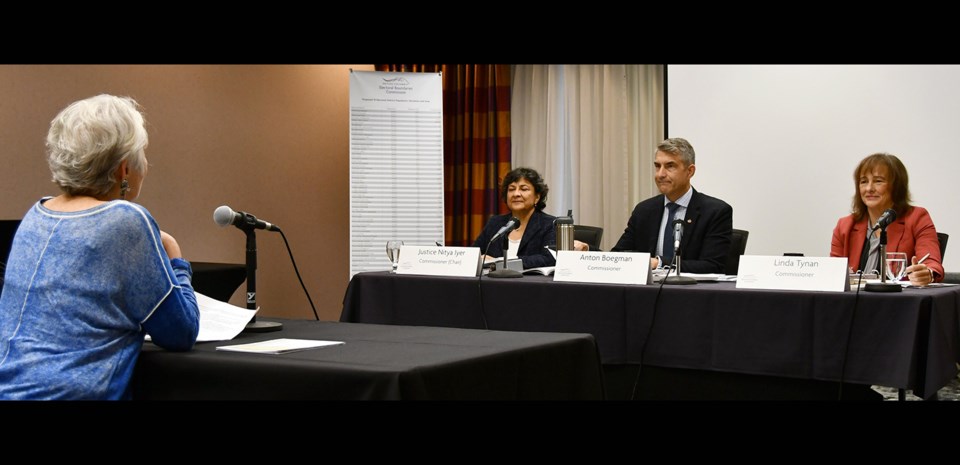Tri-City residents will send five MLAs to Victoria in 2024, if a proposal by the BC Electoral Boundaries Commission goes through.
This morning (Nov. 4), the commission was in Coquitlam to hear from the public about its plan to expand the number of electoral districts.
But, unlike the federal boundaries commission that's running at the same time as the provincial outreach, there wasn't much input.
B.C. commissioners heard from only two Port Moody residents who pressed for adjustments to the proposed Port Moody–Westwood Plateau riding to cut out the Coquitlam neighbourhooud and add part of Burquitlam instead.
No Tri-Cities MLAs were at the Nov. 4 hearing; however, they will have a chance to make comments next spring.
Currently, the region has four districts:
- Coquitlam–Burke Mountain, held by NDP MLA Fin Donnelly
- Coquitlam–Maillardville, held by NDP MLA Selina Robinson
- Port Coquitlam, held by NDP MLA Mike Farnworth
- Port Moody–Coquitlam, held by NDP MLA Rick Glumac
However, under the commission’s recommended redrawings, there would be five districts covering the Tri-Cities:
- Coquitlam–Burke Mountain
- Coquitlam–Mundy Park
- New Westminster–Maillardville
- Port Coquitlam
- Port Moody–Westwood Plateau
The proposed changes are to respond to the area's population surge, said Anton Boegman, B.C.'s chief electoral officer who is on the panel with Supreme Court Justice Nitya Iyer (chair); and Linda Tynan, a local government advisor.
In total, they are suggesting six new electoral districts for the province, increasing the number of MLAs from 87 to 93 and bringing each riding to an ideal population of about 53,000 residents, based on the 2021 census.
The deadline for the commission report is April 3, 2023.
Specifically, here’s what’s on the table for the Tri-Cities:
- Coquitlam–Burke Mountain
- Remove Westwood Plateau and add it into the adjacent riding of Port Moody–Westwood Plateau for future growth in the northeast sector of the city.
- Coquitlam–Mundy Park
- Follow North Road east to Westwood Street (in general), and extend from Lougheed Highway south to the Fraser River. Include the two Kwikwetlem First Nation reserves and the neighbourhoods of Harbour Chines, Cariboo, Austin Heights, Fraser Mills, Ranch Park and Mayfair, but not Maillardville.
- New Westminster–Maillardville
- Include part of Austin Avenue south to the Fraser River (but not Fraser Mills) and add downtown New Westminster south of Sixth Avenue, as well as the neighbourhoods of Queen’s Park, Sapperton and Brunette Creek.
- Port Coquitlam
- Follow the municipal lines of the City of Port Coquitlam, but remove the two kʷikʷəƛ̓əm (Kwikwetlem) reserves to include them in the adjacent Coquitlam–Mundy Park riding.
- Port Moody–Westwood Plateau
- Include the City of Port Moody and villages of Anmore and Belcarra. Add the Coquitlam neighbourhood of Westwood Plateau and part of Burquitlam to Smith Avenue.
You can use the commission’s interactive mapping tool to toggle between the current and proposed ridings.
Meanwhile, the commission is accepting submissions until Nov. 22. Its final report is set to be published next spring.
The 43rd provincial election is scheduled to be held on or before Oct. 19, 2024.
As for the Federal Electoral Boundaries Commission in B.C., the panel is now finalizing its report. In September, about a dozen speakers at the Coquitlam Public Library unanimously told the panel they didn’t want southern Port Coquitlam chopped out of a Tri-Cities riding.
For more information, you can visit the redistribution proposal's website.

.jpg;w=120;h=80;mode=crop)



